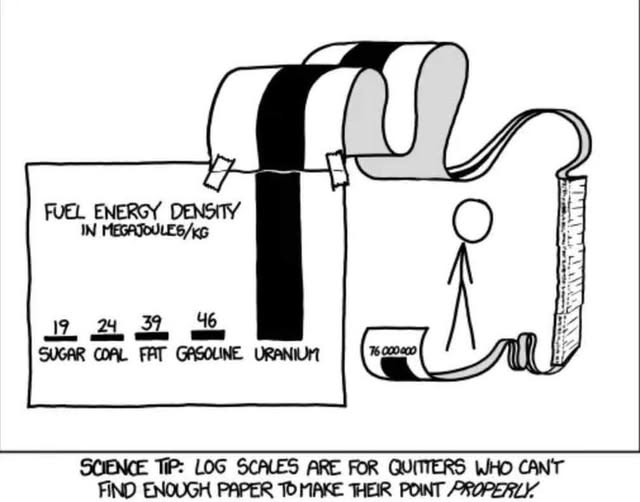this post was submitted on 09 Apr 2025
1252 points (98.7% liked)
Science Memes
17420 readers
2145 users here now
Welcome to c/science_memes @ Mander.xyz!
A place for majestic STEMLORD peacocking, as well as memes about the realities of working in a lab.

Rules
- Don't throw mud. Behave like an intellectual and remember the human.
- Keep it rooted (on topic).
- No spam.
- Infographics welcome, get schooled.
This is a science community. We use the Dawkins definition of meme.
Research Committee
Other Mander Communities
Science and Research
Biology and Life Sciences
- !abiogenesis@mander.xyz
- !animal-behavior@mander.xyz
- !anthropology@mander.xyz
- !arachnology@mander.xyz
- !balconygardening@slrpnk.net
- !biodiversity@mander.xyz
- !biology@mander.xyz
- !biophysics@mander.xyz
- !botany@mander.xyz
- !ecology@mander.xyz
- !entomology@mander.xyz
- !fermentation@mander.xyz
- !herpetology@mander.xyz
- !houseplants@mander.xyz
- !medicine@mander.xyz
- !microscopy@mander.xyz
- !mycology@mander.xyz
- !nudibranchs@mander.xyz
- !nutrition@mander.xyz
- !palaeoecology@mander.xyz
- !palaeontology@mander.xyz
- !photosynthesis@mander.xyz
- !plantid@mander.xyz
- !plants@mander.xyz
- !reptiles and amphibians@mander.xyz
Physical Sciences
- !astronomy@mander.xyz
- !chemistry@mander.xyz
- !earthscience@mander.xyz
- !geography@mander.xyz
- !geospatial@mander.xyz
- !nuclear@mander.xyz
- !physics@mander.xyz
- !quantum-computing@mander.xyz
- !spectroscopy@mander.xyz
Humanities and Social Sciences
Practical and Applied Sciences
- !exercise-and sports-science@mander.xyz
- !gardening@mander.xyz
- !self sufficiency@mander.xyz
- !soilscience@slrpnk.net
- !terrariums@mander.xyz
- !timelapse@mander.xyz
Memes
Miscellaneous
founded 2 years ago
MODERATORS
you are viewing a single comment's thread
view the rest of the comments
view the rest of the comments

How much more energy would you get if you fused uranium?
Using the rule of thumb, anything heavier than iron requires energy input to fuse. So you lose energy fusing uranium.
Serious answer: A huge negative amount. Anything above iron requires energy to fuse (which is why it produces energy from fission.) and I'm pretty sure nothing with 184 protons could be stable enough to count as being produced - the nuclei would be more smashed apart than merging at that point.
Ask Hiroshima and Nagasaki.
In alphabetical order.
Edit: oops, those are fission, my bad
Those are fission. Fusion bombs don't fuse uranium. They use a fission bomb to fuse Lithium.
Look at all these nuclear scientists on Lemmy.
Sorry I meant Lithium Deuteride.
6Li2H
https://en.m.wikipedia.org/wiki/Thermonuclear_weapon
I mean if we really want to be technically accurate here, the lithium is just a moderater for the hydrogen isotopes to fuse.
But for me it gets fuzzy when looking at the reaction.
LiD is 4 protons, 8 neutrons. Add a new neutron, and bam, you have 4 protons and 9 neutrons. But that's where it gets weird to me. The lithium needs to decay or something into a tritium and dueterium which forces the tritium to fuse with the existing dueterium in the LiD molecule? Clearly the neutron has enough energy to transfer into one of the atoms to increase the chance of tunneling actually occuring.
The only real purpose of the lithium deuteride is that it's a dry, shelf-stable, room-temperature fuel. The very first hydrogen "bomb" (actually a building-sized device) used supercooled liquid hydrogen as the fusion fuel, but this was obviously not practical for a deliverable bomb.
I get that part, it's still the reaction I can't wrap my head around mainly because I don't understand how chemistry is any different than alchemy.
I know that lithium itself doesnt fuse to create He+T+D, and I know it can't undergo fission. Since lithium isn't left over, and lithium-6 and 7 are stable, does that mean the neutron with extremely high kinetic energy really knocks like two of the LiD mokecules into each other, causing dueterium -dueterium fusion resulting in He4, and the Li6 gets more neutrons that for it to be come unstable enough to decay into tritium or deuterium?
How about a nice game of Global Thermonuclear War?
For that matter, even the Nagasaki bomb ("Fat Man") didn't use Uranium at all - its fuel was Plutonium.
Oh, they do, but not as the primary or secondary. You can wrap depleated uranium around the core to capture fast neutrons that are leftover from the rest of the process. Changing the number of layers is how you can dial in a desired yield.
Damnit, you're right and I'm wrong!
That's fissed, not fused.
I stand corrected, because I done forgetted.